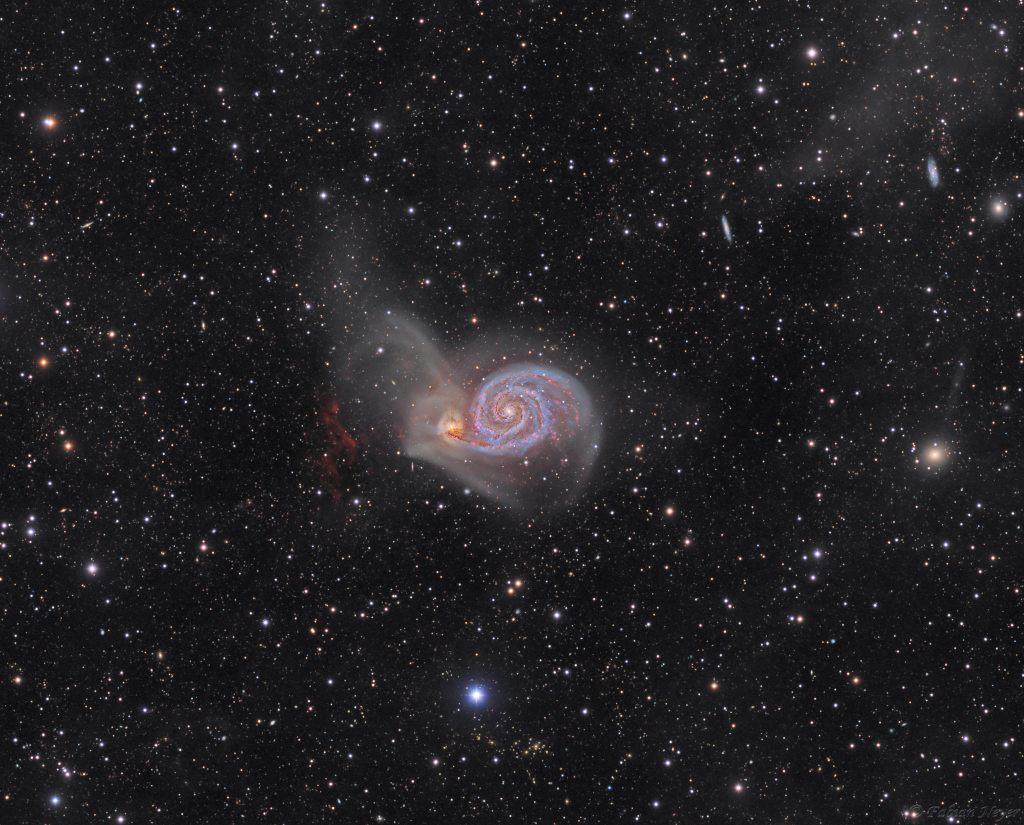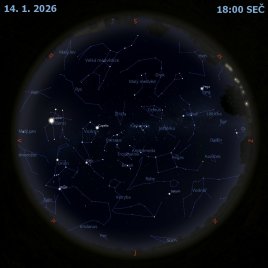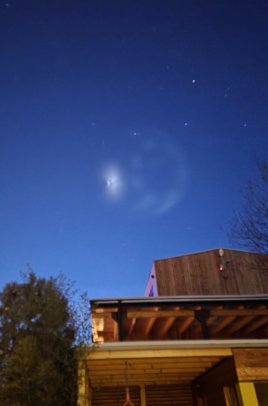M51: Vírová galaxie

Uznání a copyright: Fabian Neyer
Vyhledejte Velký vůz a sledujte jeho oje pryč od vozu, až se dostanete k jeho poslední jasné hvězdě. Potom svůj dalekohled posuňte trochu na jih a západ a narazíte na tento úžasný pár interagujících galaxií, 51. položku ve slavném katalogu Charlese Messiera. Tato velká spirální galaxie s dobře definovanou spirální strukturou je též katalogizovaná jako NGC 5194 a zřejmě byla tou původní spirální mlhovinou. Její spirální ramena a prachové pásy se jasně zatáčejí před její doprovodnou galaxií NGC 5195 (vlevo). Tento pár je asi 31 milionů světelných roků daleko a oficiálně se nachází v úhlových hranicích malého souhvězdí Honicích psů (Canes Venatici). M51 se při pohledu okem přímo do dalekohledu jeví slabá a rozmazaná. Ovšem na pozoruhodně hlubokém obrazu jsou vidět podrobnosti této interagující galaxie ve výrazných barvách a galaktické slapové trosky. Snímek obsahuje téměř 90 hodin úzkopásmových obrazových dat a také ukazuje rozsáhlá zářivá oblaka červeného ionizovaného vodíku objevená v systému M51.
Seznam odkazů v popisu
- APOD: 2021-07-31 Vzpomínka na NEOWISE
- UniverseToday.com: Messier 51 – the Whirlpool Galaxy
- Obspm.fr: Messier 51
- SEDS.org: Lord Rosse's drawings of M51, his "Question Mark" "Spiral Nebula"
- NASA: Messier 51 (The Whirlpool Galaxy)
- APOD: 2013-08-31 NGC 5195: Tečka pod otazníkem
- HawAstSoc.org: Canes Venatici -- Boötes Hunting Dogs
- StarPointing.com: Fabian Neyer: Whirlpool Galaxy - M51
- APOD: 2020-01-08 Galaxie v Řece
- arXiv.org: Discovery of a vast ionized gas cloud in the M51 system
NASA Official: Phillip Newman Specific rights apply. NASA Web Privacy Policy and Important Notices
A service of: ASD at NASA / GSFC & Michigan Tech. U.
Odkaz na originální APOD


